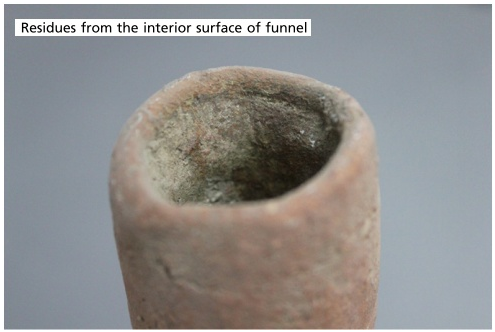Beer, the world’s most popular processed beverage, after tea, is also the most ancient, says S.Ananthanarayanan.

Fermentation, and the euphoria that comes from drinking its products, was surely discovered by happy accident. The accident must have been of sugary fruit that got bruised in storage. But getting alcohol from grain, which has starch, not sugar, is technology, and represents another level of development
The discovery, by Jiajing Wang, Li Liu, Terry Ball, Linjie Yu, Yuanqing Li and Fulai Xing, of the Universities of Stanford and Brigham Young and the Zhejian Research Institute of Chemical Industry, Hangzhou and the Shaanxi Institute of Provincial Archeology, Xi’an, in China, that brewing beer was a regular practice as early as 5,000 years ago, reported in the Proceedings of the Academy of Sciences (PNAS), is hence remarkable. This places the invention of beer at about the same time as that of the wheel!
A related process of even greater antiquity is the production of rice wine, which is actually a form of beer, as the starting point is the starch in rice, not sugar. The conversion of the starch to sugar, in rice wine, however, is natural, with the help of molds and enzymes produced by microbes. This is unlike the case of the usual beer, where production of enzymes in the grain needs to be activated.
Alcohol is the result of the action of yeast on sugar, where the sugar splits into alcohol and carbon dioxide. Wine is traditionally made from grapes, which have the yeast on their skin. All that needs to be done, for the simplest wine, is to crush the grapes and cover the juice. But there can be a more copious supply if we start from starch, of which there is plenty in grain. Here, the starch has first to be converted into sugar and then fermented with the help of external addition of yeast. This process involves germinating the grain for production of the enzymes that first soften the outer layer of the seeds and later convert the starch that lies within.
When the germination, for which the grain is steeped in water, has got started, it is also stopped before the starch is consumed, by drying the grain in warm air, a process that is called ‘kilning’. The dry grain, which is ‘malt’, is then coarsely ground or ‘milled’, to be followed by the process of ‘mashing’. This process is to run warm water, at carefully controlled temperature, over the malt, to promote the formation and extraction of sugars, as the sweet ‘wort’, which will be fermented. We can see that making beer from grain is a process of some complexity and the outcome of trial and experiment, and unlikely to develop unless there is a social, commercial and critical appreciation of the product.
Ancient Beer
Wang and co-workers found evidence of ancient beer making in a site called Mijiaya, located in the Shaanxi district, a plateau in North West China, in the middle reaches of the Yellow River (Huáng Hé). The basin of the Yellow River is considered the cradle of civilization in China and teems with archeological finds. Mijiaya falls between Xi’an, known for finds of well organized New Stone Age settlements (6,700 to 5,600 BC), and Zhengzhou, the centre of the Shang culture (1,600 to 1,300 BC)

Writing developed during the Shang period and inscriptions on bone and tortoise shell, the so called ‘oracle bone inscriptions’, were discovered and deciphered in the early 20th Century. While the inscriptions contain description of the social, economic and administrative conditions of the time, they also contain the first records of beer in China, made by the Shang people with malted grain, with millets and barley or wheat as the main brewing ingredients, the authors of the PNAS paper say. Scholars have considered that the tradition may be older, as there was much agriculture in the region during the New Stone Age, Yangshao period (5,000-2,900 BC), with records of rice-based fermented beverages in the even more ancient Jiahu site, the authors say. But there has been no evidence of alcohol production in the Yangshao sites so far, they say.
The Maijiaya site, where Wang and colleagues have found new evidence, was discovered in 1923 and excavated from 2004 to 2006. Artifacts that appear to be beer making equipment were recovered from two pits that were found on excavation, and they were carbon dated to 3,400 to 2,900 BC, or the late Yangshao period. The artifacts consisted of intact, wide mouthed funnels and pieces of wide mouthed pots and amphorae and stoves. The funnels, pots and amphorae appear to be specifically for brewing, filtration and storage while the stove would be used for heating and temperature control while mashing.
To verify this attractive supposition, the team carried out tests on the residues found on the funnels and pieces of pots and amphorae. The residues contained specks of starch, which could come from grain, and particles of mineral, the phytoliths, which are commonly found in remains of decomposed plant material. The starch grains were identified as being almost all from millets and varieties of wheat or barley and partly from tubers, like yam, which are found in the region. While this suggests a recipe for beer with strength, stability and flavour, the grains of starch also showed signs of damage – pitting and being swollen or folded, which are like what is produced during the brewing process. During malting, enzymes start the process of breaking down starch into sugars and cause pits in the starch grains. And then, during mashing, when the grains are in warm water, they swell and lose shape. “Thus, the damaged state of the starch grains in our archeological sample provides strong evidence for the conclusion that those starch grains are residues from the brewing process,” the PNAS paper says.Different plants produce phytoliths of different, specific forms. Analysis of the phytoliths, the paper says, clearly indicate that the origin was of grasses and, particularly, varieties of wheat and barley. “The profile of phytoliths corroborates the starch grain assemblage, indicating the presence of broomcorn millet, Job’s tears, and barley,” the paper says.

Chemical analysis of the residue also showed unmistakable signs of beer brewing activity. A characteristic product of steeping, mashing and fermentation of cereals is Calcium Oxalate, which settles as ‘beerstone’ in vessels that are used in beer making. While the presence of oxalates liningS the vessels suggests use in beer making, the paper notes that some other plants, like spinach, also contain oxalates. However, the present vessel types are hardly suitable for storing fresh vegetables and such sources are unlikely, the paper says. One more possibility to rule out, the paper says, is that that the artifacts were contaminated by the surrounding soil or after the site had been excavated. The exterior of the vessels and also other fragments and material at the site were hence analysed, with negative results.
Source of barley
While it is clear that barley was an ingredient in this beer of Yangshao, there is no evidence that barley was cultivated in China during the period. There have been sporadic finds in the Bronze Age, around 2,000 BC and it is only in the second century BC that barley became important in China, the paper says. The few, Bronze Age finds may hence represent cultivation as a rare, exotic food. The PNAS paper suggests that the Mijiaya farmers (or brew masters) may have made arrangements for small quantities of barley, and only for making beer, not as an item of food! The Yangshao period in this region is known for considerable social complexity, the paper says. The prevalence of beer during the time and the group relationships that alcohol enables may have contributed to the great social structure and organization that the region is known for, the paper says.
------------------------------------------------------------------------------------------